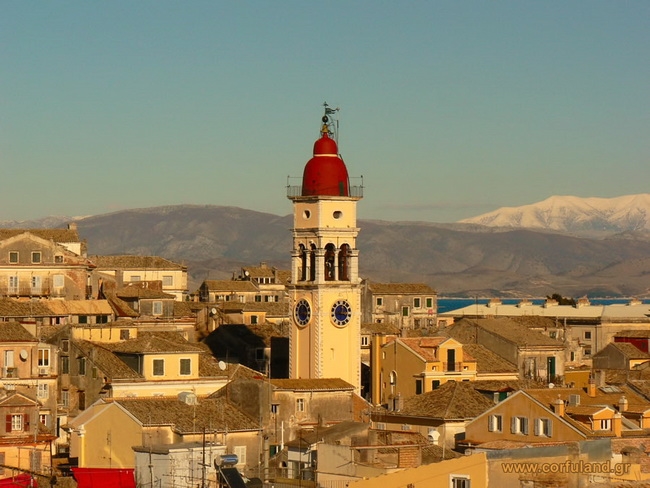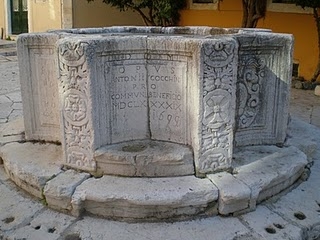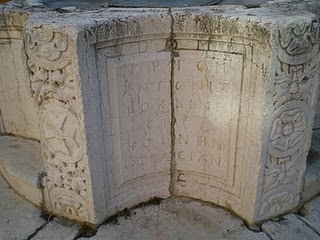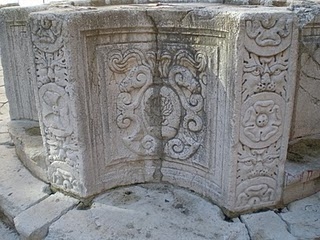NOTE: A new cache was placed on 05/05/13, because the last one was stolen.
THE CACHE:
The cache is a small tube somewhere around a small square in the heart of Campiello - a labyrinth of small alleys. The name of the square is "Kremasti" and in the center of it is situated a 17th-century Venetian Well (in Greek "Pigadi").
The cache holds only small items so if you want to leave something behind, have something small with you. Originally, inside the cache were: the LogBook, a small pencil, instructions, a FTF card and an old coin as a FTF award, a glass marble, a chess figure and two small silver pendants.I suggest to bring a pencil or pen with you, just in case..!
Be extra careful with any muggles around, because the locals might be a little curious and the houses around the area are tall so you can be easily spotted! Even if you find the cache easily, take some time to wander around the small alleys! You will discover little squares that even the locals (including me...) are not aware of!...Also, the coordinates might not be super precise, but once you find the old well, the rest are quite easy! This is my first cache so let me know what you think of the location, the cache-listing, the info provided etc. Have fun, enjoy Corfu....

THE CAMPIELLO AREA:
The area behind the seafront in Corfu between the old and new fortresses is known as the campiello. As with all old towns, it is the area visitors find most mysterious, most interesting, most aesthetically pleasing and the area that throws up the most questions. This is also the area where generations of families have lived, worked and played.

A campiello is a maze of ancient narrow streets and equally old, tall buildings. These are connected by stone stairways and passageways which sustain the old world atmosphere. This old town was founded in Angevin times (1267-1386) but is distinctly Venetian since the original medieval buildings were replaced by Venetian renaissance houses three or four storeys high. They were built between the old and the new fortresses and were inevitably added to as the decades rolled by. Residents were anxious to remain within the confines and relative safety of the two fortresses rather than be forced to live outside the walls where there was no protection from the unending enemy attacks.
Today the walls of many of these once wonderful houses may be crumbling but they are still nostalgic remnants of a colourful and active past with the original Venetian motifs and mouldings still visible on walls or doors. Terraced gardens, smooth paving underfoot, balconies, shrines, churches, tavernas, bistros and shops seemingly around every corner add to the boisterous yet mysterious shadows of an ancient past. This is the seductive feel of the campiello.
THE OLD VENETIAN WELL:
The old 17th-century Venetian Well is situated in the middle of Campiello. It was featured in some movies (like the greek "The price of love"). It was constructed in 1699 by Antonio Cocchini (Cocchini was a venetian noble family - the modern village of "Kokkini" took its name from the family which probably owned the area back then) in the middle of a small square ("campiello" in the italian language, which means a small square - the whole area of Campiello probably took its name from this place).


The well is richly ornated with engravings and commemorative inscriptions. It is an octagon so it has eight faces. On one of them we could read in Latin:
D(EO) O(PTIMO) M(AXIMO) OPVS ANTONII COCCHINI PRO COMMVNI BENEFICIO MDCXXXXIX 1699

The same inscription in Greek could be seen on the face facing the church of Kremasti. In English, the inscriptions could be translated like: "To the greatest and best god/ work of Antonio Cocchini/ for the common benefit/ 1699"
Two other faces bear the Cocchini family coat of arms:


The Cache location! (Spoiler)
The cache & its first contents!
